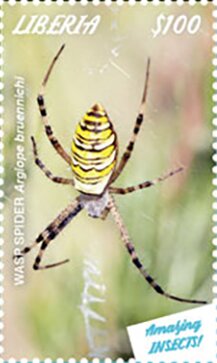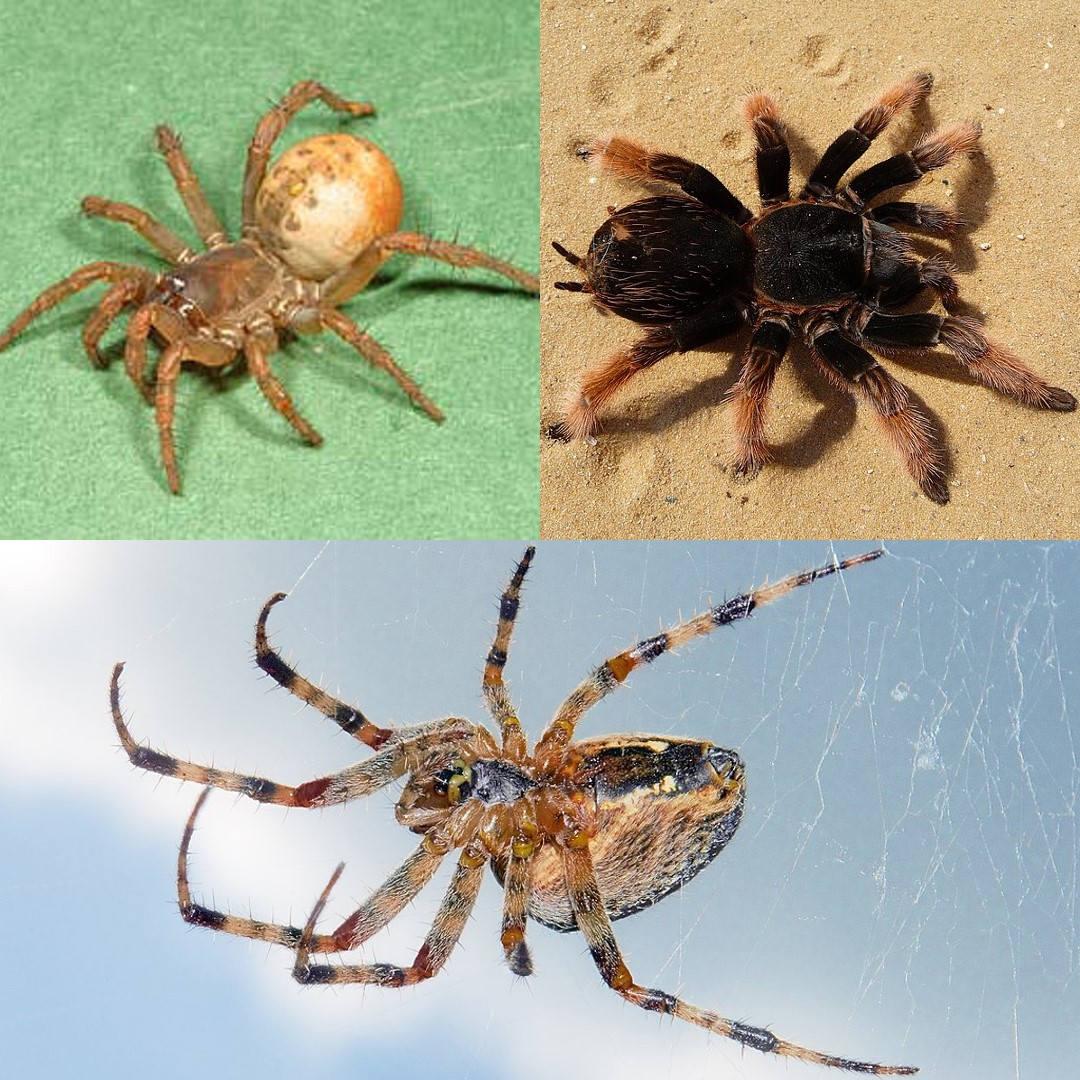Stamp: Wasp Spider (Liberia 2019)
Wasp Spider (Liberia 2019)
28 March (Liberia ) within release Amazing Insects (2019) goes into circulation Stamp Wasp Spider face value 100 Liberian dollar
| Stamp Wasp Spider in catalogues | |
|---|---|
| Colnect codes: | Col: LR 2019-03MS1a |
Stamp is square format.
stamp from mini-sheetAlso in the issue Amazing Insects (2019):
- Stamp - Giant African Mantis face value 200;
- Mini Sheet - Grasshoppers face value 900;
- Stamp - Wasp Spider face value 300;
- Stamp - Grasshoppers face value 350;
- Stamp - Beetles face value 300;
- Stamp - Grasshoppers face value 300;
- Mini Sheet - Giant African Mantis (Sphodromantis viridis) face value 900;
- Stamp - Giant African Mantis face value 400;
- Stamp - Dung Beetle face value 300;
- Mini Sheet - Wasp Spider face value 900;
- Stamp - Beetles face value 300;
- Mini Sheet - Beetles face value 900;
- Stamp - Wasp Spider face value 500;
- Stamp - Grasshoppers face value 250;
- Stamp - Dung Beetle face value 300;
- Stamp - Wasp Spider face value 100;
- Mini Sheet - Dung Beetle face value 900;
- Stamp - Giant African Mantis face value 300;
- Stamp - Beetles face value 300;
- Stamp - Dung Beetle face value 300;
|
Data entry completed
53%
|
|
|---|---|
| Stamp Wasp Spider in digits | |
| Country: | Liberia |
| Date: | 2019-03-28 |
| Print: | Offset lithography |
| Emission: | Commemorative |
| Format: | Stamp |
| Face Value: | 100 Liberian dollar |
Stamp Wasp Spider it reflects the thematic directions:
Insects (from Latin insectum, a calque of Greek ἔντομον [éntomon], "cut into sections") are a class (Insecta) of hexapod invertebrates within the arthropod phylum that have a chitinous exoskeleton, a three-part body (head, thorax and abdomen), three pairs of jointed legs, compound eyes and one pair of antennae. They are the most diverse group of animals on the planet, including more than a million described species and representing more than half of all known living organisms. The number of extant species is estimated at between six and ten million, and potentially represent over 90% of the differing animal life forms on Earth. Insects may be found in nearly all environments, although only a small number of species reside in the oceans, a habitat dominated by another arthropod group, crustaceans. The life cycles of insects vary but most hatch from eggs. Insect growth is constrained by the inelastic exoskeleton and development involves a series of molts. The immature stages can differ from the adults in structure, habit and habitat, and can include a passive pupal stage in those groups that undergo 4-stage metamorphosis (see holometabolism). Insects that undergo 3-stage metamorphosis lack a pupal stage and adults develop through a series of nymphal stages. The higher level relationship of the Hexapoda is unclear. Fossilized insects of enormous size have been found from the Paleozoic Era, including giant dragonflies with wingspans of 55 to 70 cm (22–28 in). The most diverse insect groups appear to have coevolved with flowerin plants.
Spiders (order Araneae) are air-breathing arthropods that have eight limbs, chelicerae with fangs generally able to inject venom, and spinnerets that extrude silk. They are the largest order of arachnids and rank seventh in total species diversity among all orders of organisms. Spiders are found worldwide on every continent except Antarctica, and have become established in nearly every land habitat. As of September 2024, 52,309 spider species in 134 families have been recorded by taxonomists. However, there has been debate among scientists about how families should be classified, with over 20 different classifications proposed since 1900.


